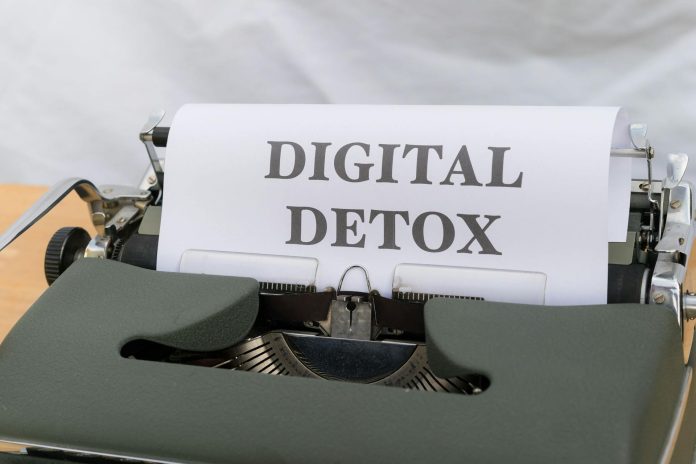In our digital age, screens dominate much of our daily lives. From work to leisure, our reliance on digital devices has skyrocketed, often leading to increased stress, reduced productivity, and strained relationships. A digital detox—an intentional break from screens—can help restore balance, improve mental health, and enhance overall well-being. This article offers practical tips for reducing screen time effectively, enabling you to regain control over your digital habits and live a more balanced life.
Understanding the Need for a Digital Detox
The first step in reducing screen time is understanding why it’s necessary. Excessive screen use can lead to a range of negative effects, including eye strain, poor sleep, decreased productivity, and increased anxiety and depression. Social media, in particular, can contribute to feelings of inadequacy and FOMO (fear of missing out). Recognizing these impacts is crucial for motivating yourself to make a change.
A digital detox involves intentionally disconnecting from digital devices to focus on real-world activities and relationships. It doesn’t mean abandoning technology altogether but rather finding a healthier balance. Start by assessing your current screen time using built-in tools on your devices or third-party apps. Understanding how much time you spend on screens and what activities dominate your digital life will help you set realistic goals for reduction.
Setting Realistic Goals and Boundaries
Effective digital detoxing begins with setting clear, achievable goals. Decide how much screen time is acceptable for you each day and what activities you want to prioritize instead. For example, you might aim to limit social media use to 30 minutes a day or set a goal to read a book for 30 minutes each night instead of scrolling through your phone.
Establish boundaries to help achieve these goals. Create specific times and places where screens are off-limits, such as during meals, in the bedroom, or an hour before bed. Implementing screen-free zones in your home can encourage more face-to-face interactions and help you unwind without digital distractions. Use features like Do Not Disturb or Focus Mode on your devices to minimize interruptions during work or personal time.
Communicate your goals and boundaries with family and friends to ensure their support. Let them know you’re trying to reduce screen time and might not be as responsive to messages or calls. Encouraging them to join you in a digital detox can also create a supportive environment and make the process more enjoyable.
Replacing Screen Time with Offline Activities
A key aspect of a successful digital detox is finding fulfilling offline activities to replace screen time. Rediscover hobbies or interests that you’ve neglected, such as reading, gardening, cooking, or exercising. Engaging in physical activities not only reduces screen time but also boosts your overall health and well-being. Consider joining clubs or groups related to your interests to meet new people and enjoy social interactions without screens.
Spending time outdoors is another excellent way to disconnect from digital devices. Nature walks, hiking, or simply spending time in a park can be incredibly rejuvenating. The natural environment helps reduce stress and improve mood, offering a refreshing break from the constant stimulation of screens.
Mindfulness and relaxation practices, such as meditation or yoga, can also be valuable replacements for screen time. These activities promote mental clarity and relaxation, helping you to break the habit of reaching for your phone during idle moments. Additionally, they can improve sleep quality, which is often negatively impacted by excessive screen use.
Managing Digital Work and Responsibilities
For many, screens are an essential part of work and daily responsibilities, making a complete digital detox impractical. However, there are ways to manage digital use more mindfully even within these constraints. Start by organizing your workday to include regular breaks away from screens. The Pomodoro Technique, which involves working for 25 minutes and then taking a 5-minute break, can help maintain productivity while ensuring you step away from your device regularly.
Prioritize tasks that require screen time and try to batch similar activities together to minimize the constant switching between tasks and screens. Use tools and apps designed to enhance productivity and limit distractions, such as website blockers or time management apps. These tools can help you stay focused during work hours and reduce the temptation to engage in non-work-related screen activities.
Outside of work, be intentional about your digital interactions. Limit time spent on unnecessary emails or social media scrolling and focus on meaningful communication. Set specific times to check and respond to messages rather than constantly being available. This approach helps create a clearer distinction between work and personal time, reducing overall screen exposure.
Embracing the Long-Term Benefits
A digital detox offers numerous long-term benefits that go beyond just reducing screen time. Improved mental and physical health, better sleep, increased productivity, and stronger relationships are just a few of the positive outcomes you can expect. By cultivating healthier digital habits, you can achieve a more balanced lifestyle and greater overall satisfaction.
Maintaining a digital detox mindset requires ongoing effort and mindfulness. Regularly assess your screen time and adjust your goals and boundaries as needed. Celebrate your successes and learn from setbacks, understanding that finding the right balance is an ongoing process.
Encourage a culture of mindful digital use within your community. Share your experiences and strategies with others and support each other in reducing screen time. By fostering a supportive environment, you can help create a ripple effect that benefits not only yourself but also those around you.
Incorporating a digital detox into your lifestyle can significantly enhance your well-being by reducing stress and improving mental and physical health. By understanding the need for a digital detox, setting realistic goals, replacing screen time with fulfilling activities, and managing digital responsibilities mindfully, you can achieve a healthier balance between your digital and offline lives. Embrace the journey of reducing screen time and discover the profound benefits of a more present and connected life.

